In retrospect, it was nothing but the blessing of Mahadev; who, just before the pandemic that brought the world to a complete standstill, summoned me to His abode. If a chance to straddle the mighty Himalayas isn’t reason enough to do so with the intent of visiting one of the highest (perhaps the highest) stone Shiva temple in the world what was this chance one may ask? Total, unbridled wanderlust.
The Garhwal Himalayas are the mythical abode of Lord Shiva, and the trek to Tungnath one of the most scenic journeys that one can undertake. For the pious, it is a wonderful excuse for travelling through amazing vistas; for the atheist, it provides a million more alternatives than the ‘traditional God’ and for the agnostic, if this journey does not spark an inspiration there there isn’t much on this planet that will.
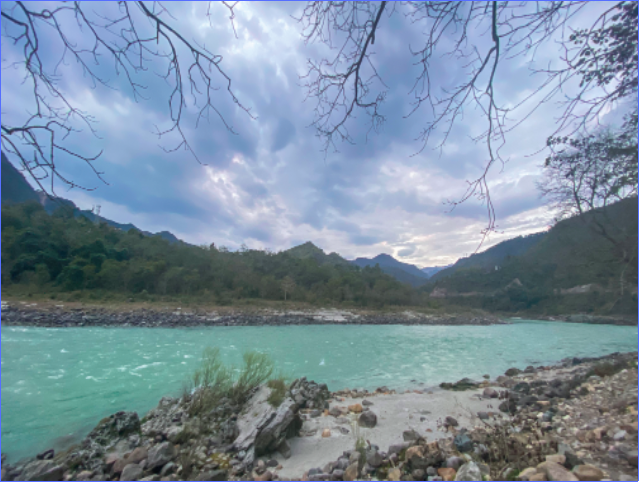
Several roads snake up the many hills of the Garhwals from Rishikesh. For the modern day traveller, they make it possible to visit more places in one lifetime, or even one visit, than any previous generation. Yet, the real highway of these hills are the panch-prayaag – five confluences that have served as the backbone, and milestones to generations of travellers, saints, mystics; and if legends are to be believed, even Gods.
The antiquity of this region predates all modern day notions of history. Even legends are too young a cipher to preserve all the events, and miracles that unfolded along this route; witnessed by the playful Ganga, before it dons its more serene avatar of the plains. Who knows, how many there were before She graced the earth to absolve the lineage of King Bhagirath of all sins?
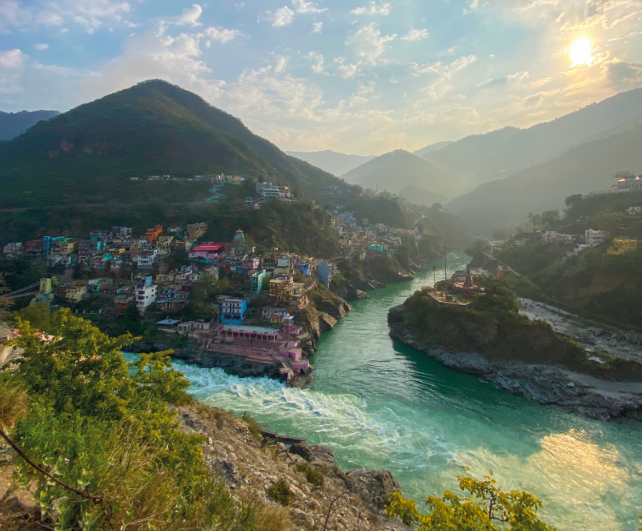
It is a part of tradition to weave tales of happenings that deserve to be preserved, to be told and retold as per the wisdom of every age. And this tradition is alive and flourishing in every fold of these hills that were once venerated as Kedarkhand – the land of the Panch Kedars ( The five Hindu temples in Garhawal Himalayas dedicated to Shiva). Story, fable, myth, legend, and even tall tales; all mingle and create a milieu heady with possibilities. As ever, there is one that ties them all together, the grandparent of several stories of Kedarkhand, without which so many would never have had a chance to be birthed.
The legend of Kedarkhand
Once upon a time, when the epoch defining war of Kurukshetra had culminated and the Pandavas had vanquished the Kauravas, Rishi Vyaas explained to the victors that their victory had come at the cost of several choices that were against dharma, including the sin of fratricide and the killing of Brahmins. To atone for them, he advised the Pandavas to seek out Lord Shiva who alone could pardon such misdeeds.
The Pandavas set off to Kashi in search of Shiva, who, annoyed at their actions, was avoiding them. Shiva disguised himself as Nandi, the bull, and left Kashi for the hills of Uttarakhand. The Pandavas realising that Shiva was camouflaged, gave a chase till a place where Nandi jumped into the earth. Bhima, the strong one, lunged to prevent Shiva disappearing and held on to the tail and hind legs, but the bull disappeared into the ground.
This place on the bank of the Mandakini River, where Shiva pulled off His vanishing act and entered the earth after leaving Kashi, his home in the plains is named Guptakashi (the secret or hidden Kashi); and a temple in the image of the Kashi Vishwanath of Varanasi stands at the place where this event occurred.
The bull later reappeared as Shiva in five different forms across the region of Kedarkhand. To appease Shiva, the Pandava brothers built temples at these five places which are today worshiped as the Panch Kedars.
Each temple is associated with a part of the bull or Shiva`s body. The hump of the bull is Kedarnath, the face, Rudranath, the navel at Madhyamaheshwar, the locks at Kalpeshwar and the arms at Tungnath.
Devprayag (literally the divine confluence) about 70 kms from Rishikesh, is the first of the five river confluences. It is at this confluence that the Alaknanda, which rises at the feet of the Satopanth and Bhagirath Kharak glacier near the border with Tibet, meets the Bhagirathi, formed at Gaumukh – the foot of the Gangotri glacier. From here, the river starts being called the Ganga, and this confluence is no less holy than that at Prayag (the triveni sangam or confluence of the Ganga, Yamuna and Vedic Saraswati). A stone temple of Raghunath is the main attraction at Devprayag. It is said to be 2000 years old and Lord Rama himself is believed to have sat at one time, on the throne kept in the temple. A flight of steps from the temple leads down to the confluence of the Alaknanda and the Bhagirathi rivers.
Beyond Devprayag, the road soldiers on doggedly towards Badrinath. An offshoot of this artery leads to Chopta – a small region of meadows and evergreen forests that is part of the Kedarnath Wildlife Sanctuary. Surrounded by forests of pine, deodar, rhododendron and with swathes of rolling alpine meadows, known as bugyal in the local tongues, Chopta has a sky full of a million stars whose cool blue light is reflected from snow clad peaks that surround this little shangri-la for lovers of all things nature, especially birdwatching.
It is from Chopta that one begins several treks into these parts of the Himalayas including the Bisudi Tal trek, the trek to Kala Pahar, the climb to Deoria Tal and of course, the more popular climb to Tungnath – the arms of Shiva.
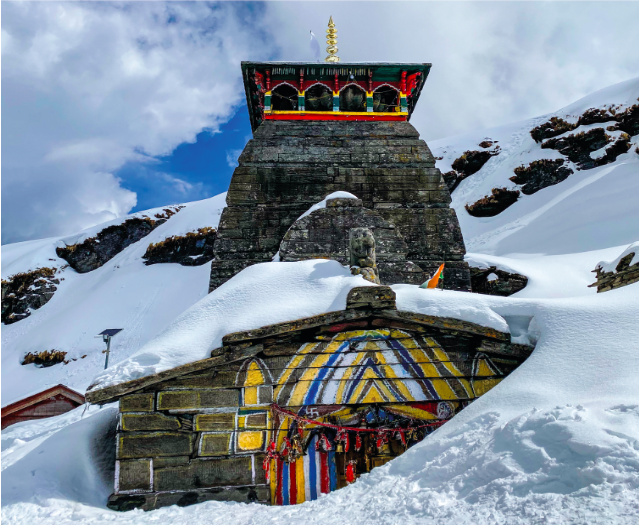
The arms of Shiva
A few kilometres from Chopta is the starting point of the climb to the Tungnath temple. Ranked third in the pecking order of the Panch Kedars, the word Tungnath literally means ‘Lord of the Peaks’. At an altitude of about 12,000 ft above sea level, it is the loftiest of the Panch Kedars and often regarded as the highest stone Shiva temple in the world.
Historically, Tungnath has lacked the hustle and bustle of the more popular Kedarnath and Badrinath, however, it has of late seen an increase in the number of visitors, not just for the sacred aura of the place, but also the beginners trek that leads to a view that simply steals the show.
It is quite predictably, most often visited in the summers and the broad grassy slopes with clusters of wild flowers and berries would be very pleasing companions up the cemented pathway. However, if you can brave the winters, there is delight of an altogether different timbre that awaits you.
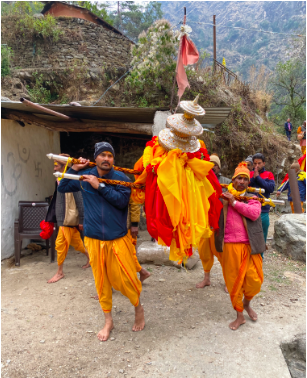
Though the temple shuts for the winters, and the symbolic image of the lord is moved by the priests to nearby Makkumath, near Ukhimath, and from where it travels in a basket from village to village in the Garhwal hills; the road up the mountain to the stoic stone structure submerged in snow is a pilgrimage of the wild kind.
Like any trek, and especially in the hills, it is best to measure distances in time rather than metric units. On average walking pace, the temple is a three-hour walk from the base and the locals are known to walk up in under an hour. However, it is important to note, that the key to making it up in three hours, is to keep walking. Staring at the hour hands of the watch will move them to three hours, but won’t bring the temple any closer!
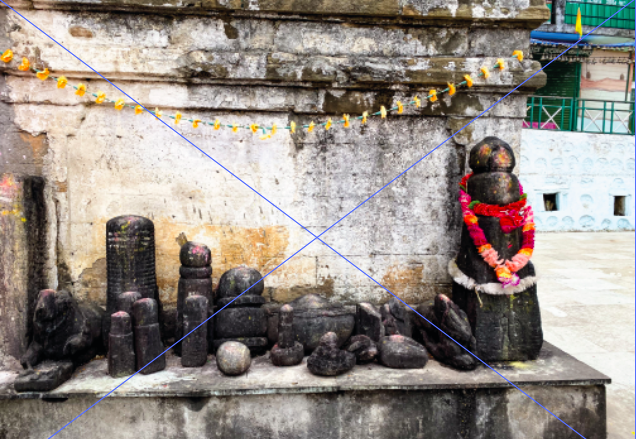
I began the climb early on a cold February morning, with fresh snow all around, well settled, and the fog of breath adding itself to some low flying clouds and slight mist with a crisp wind that looked to jolt as much as it meant to caress the skin, quite dismissive of the layers of clothing. The walk was as every account of visitors had promised – serene and exceptionally scenic. White as far as the eye can see, and sometimes brighter white when the sunlight would reflect off it. Numerous snowy peaks pierced the sky all around and created a setting that was ethereal as it was humbling.
For people from the plains, the temples of the hills often seem small, and Tungnath is perhaps on the smaller side amongst the hill temples too. The temple itself, is built in the Nagara style of architecture which is prevalent in the temples of North India and Nepal. The temple is similar to the Kedarnath temple but perhaps also seems smaller due to the sheer scale of the peaks that surround it. Behind the temple, is an endless view that also creates some strong winds that rally the many temple bells to create an experience which is magical, where every meaning to the word ‘magical’ pales as compared to the experience.
The temple itself is nestled under the peak of Chandrashila which is a further one hour and 1000 ft. trek from the temple. Literally meaning the moon-rock, an obscure legend remembers the moon God having spent time at this peak. In more recent times (well, relatively speaking), Ravana is believed to have performed penance here to appease Shiva, and also Lord Rama is believed to have meditated after defeating Ravana.
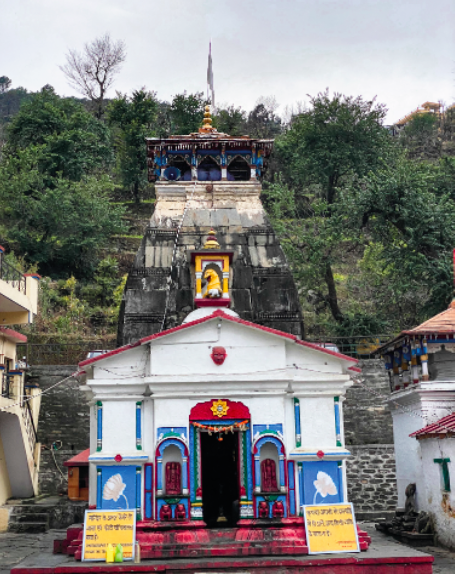
In the mountains, especially on the day you climb, the sun on your back, the wind on your face and no storms that get you waylaid are ample reasons to know that the Gods were on your side that day. It was one such day, and so were the next couple of days that were spent lazing at one of the many campsites that have mushroomed in and around Chopta, and also birdwatching, which is quite a royal pass time at Chopta as more birds come to look at you than you have to go looking for!
The embrace of Shakti
Being carried up Tungnath in the arms of Shiva, it was only natural to yearn for the mother goddess; the embrace of Shakti that denotes that dynamic, creative energy which pervades and sustains the universe. Not far from Chopta, on the banks of the Saraswati River is a pious village that is home to one of the Siddha Peeths of the region – Kalimath.
Consecrated to the Kali avatar of Shakti; it is perhaps the only place where the feminine trinity of Saraswati, Lakshmi and Kali are worshipped together. In a unique tradition, the upper half of the goddess is placed at the Dhari Devi Temple near Srinagar (Uttarakhand), where according to the local lore, the devi changes in appearance during the course of the day from a girl to a woman, and then to an old lady; while the lower half is worshipped at Kalimath. However, no idol or image is worshipped at Kalimath. Instead, devotees worship the kund ( a tank ) which is inside the temple, and, the tank is always covered with the Raktpat Sri Yantra. This kund is opened only once in a year at the time of Ashta Navami, of the Sharda Navaratri at midnight, with only the chief priest present.

The religious tradition of Kalimath believes this to be the place where the Mother Goddess disappeared here after winning the battle with the demon army of Shumbha and Nishumbha and killing the demon Raktabija, described in the tantric text, the Durga Saptashati. Raktabija had the demonic power of replicating himself from every drop of his blood spilt on the ground. All attempts to kill him had led to an entire clone army of the demon. It is for this that the Goddess manifested from her brow, the bloodthirsty Kali, who devoured every drop before it could touch the ground. In the ages after having disappeared in the ground, the continuous religious tradition was interrupted by a natural calamity, before the great sage, Adi Shankaracharya resurrected and revived this seat of power.
Local traditions insist that all new vehicles must be brought to the temple to be worshipped and a string tied to them to offer the protection of the Mata. Not very far from the Kalimath temple is a temple to Goddess Lakshmi, where it is believed that a wooden fire burns continuously since the beginning of Sat-yug. Several ancient temples in the vicinity dedicated to Lakshmi, Saraswati, Shiva, Gauri house antique idols and Shivlings.
A poet’s Au Revoir, not Goodbye…
Amongst the many divine mythologies and legends in Kedarkhand is a legend of another personality who, like the stories of the Gods, is as much history as he is a mystery – the great Sanskrit poet – Kalidas. Author of classics like Abijnanashakuntalam, and Raghuvansham; Kalidas is believed to have been the court poet of the legendary King Vikramaditya of Ujjain, and his most famous composition is undoubtedly the epic – Meghdoot.
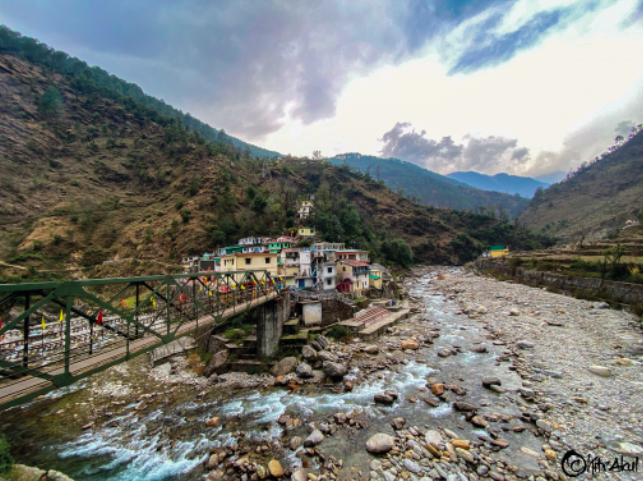
Strong belief ties Kalidas to Kalimath, where different versions of stories abound regarding his connection to the place. Some believe Kavlitha, three kilometres from Kalimath to be the place of his birth, others regard it the place where the Devi bestowed him with knowledge, transforming the simpleton into a literary genius. Some whisper of him having composed some of his masterpieces in the vicinity of the Kalimath temple.
Whichever may be true – as you would like to know truth to be – it is quite certain that wherever he composed these verses of the Meghdoot, his soul was certainly at home in these hills of Kedarkhand, one with his revered Mother Kali –
“In the North lies the great divine soul, the king of the mountains, the Himalaya, which is a scale to measure the length and breadth of the Earth.”

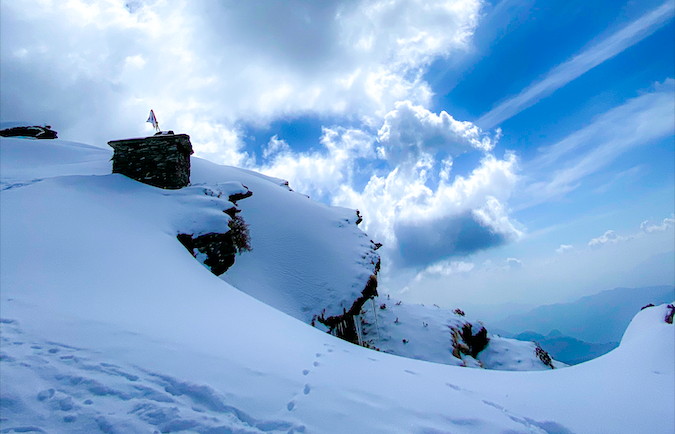
 [/column]
[/column]